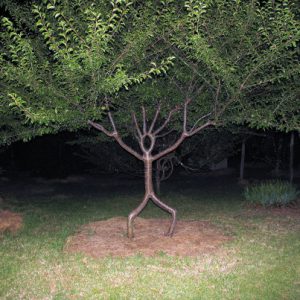
Like many other tundra plants, easter flowers grow low, close to the ground, and have a fine, insulating coat. This flower is found from the northwestern United States to northern Alaska. The goblet-like Easter flowers with their distinctive white and purple colors have evolved to adapt themselves to cold climates. They know how to absorb more sunlight and bloom at a very early time of the year.

This flower usually grows on the southern slopes, prefers sandy soil. Although indigenous people have long used the oil from the Easter tree as a medicine, if not handled or eaten directly can cause dangerous reactions, even death. .
8. Bearberry (Arctostaphylos uva-ursi)

The name of this evergreen plant comes from the fact that its fiery red berries are a favorite food of bears. Strawberry bear has a height of only 15-20cm, the body is covered with a layer of fine hair. They often grow on rocks or sand (the rocks will protect them from the effects of the wind), so are capable of living in extreme dry, harsh conditions or where the soil is poor in nutrients.
9. Arctic Saffron (Anemone patens)

Arctic saffron is a combination of purple and white, in addition to the bright stamens that help attract pollinators. The stems, shoots, and leaves are all covered with a layer of heat-trapping cilia. The arctic saffron flowers often grow in close clusters to help keep them warm and have short roots to avoid contact with the permafrost.
10. Labrador Tea (Ledum groenlandicum)

Belonging to the genus Rhododendron, Labrador tea is common in wet marshes and low-latitude forests in tundra biomes. This plant has the ability to self-regulate to suit each specific climate. In the south, where the weather is warmer, they often grow tall, straight for maximum sun exposure. While in the cold north, they grow close to the ground to reduce the influence of the wind.
11. Lupine flowers (Lupinus arcticus)

The blue-violet Lupine flowers bring life to the high grassy, rocky and snowy slopes of the tundra. Because they like wide areas to spread freely, lupines are considered a rich source of soil nutrients, especially in mineral-deficient, low-nitrogen areas. They use the thin, low stems as a weapon against the harsh weather of the tundra, while the poisonous fruit protects them from becoming food for some animals.
12. Arctic moss (Calliergon giganteum)

Arctic moss is an aquatic plant found both on the lake bottom and around the marshes of the tundra. Like other mosses, arctic moss has very small rootlets. They also develop many special abilities to help them adapt to harsh living conditions such as growing very slowly, only about 1cm per year or storing nutrients for use in the spring of next year when leaves begin to develop.
13. Compass Flower (Silene acaulis)

One of the most common plants in the northern arctic region is the compass flower. This is a perennial, slow growing plant. They grow in clusters of flowers like a thick cushion with many small leaves that help block wind and snow. These lovely clusters of flowers are found in abundance in the sandy and rocky soils of the lower Alps.
14. Gentiana nivalis

One of the national flowers of Australia and Sweden, gentian (also known as snow gentian) is an annual, vascular plant that thrives in the Arctic. They germinate, flower and seed in a very short period of time in the summer (July-August). A plant about 20cm tall, found mainly on ledges, gravel, grasslands or marshes in the mountains of Norway, Scotland or the Pyrenees, Alps, and Apennines.
15. Purple tiger ear grass (Saxifraga oppositifolia)

Purple tiger ear grass with its low stem, overlapping oval leaves, also forms a floral cushion on the tundra ground. It is the earliest flowering plant in the tundra flora (between April in hilly areas and June in arctic regions). Tiger ear grass is used by researchers to observe the effects of climate change on tundra ecosystems.





